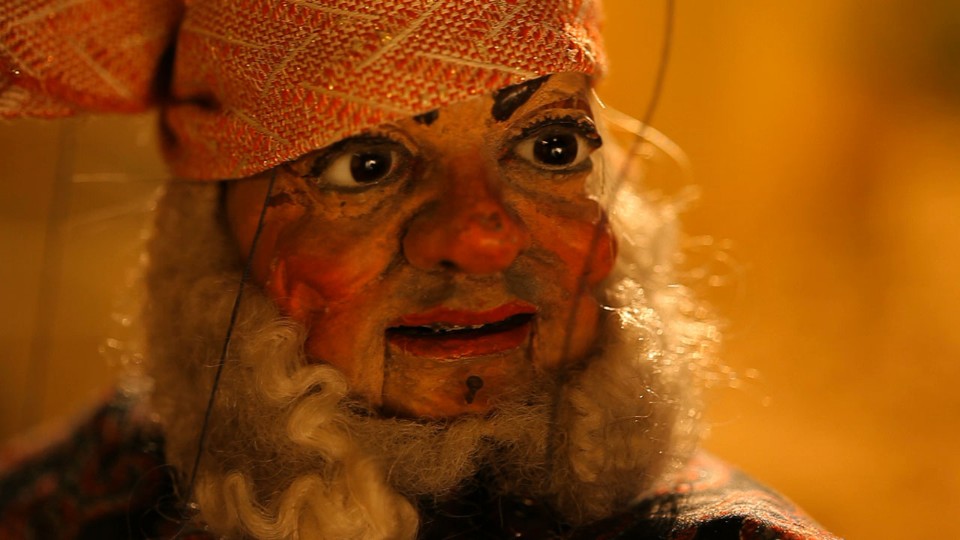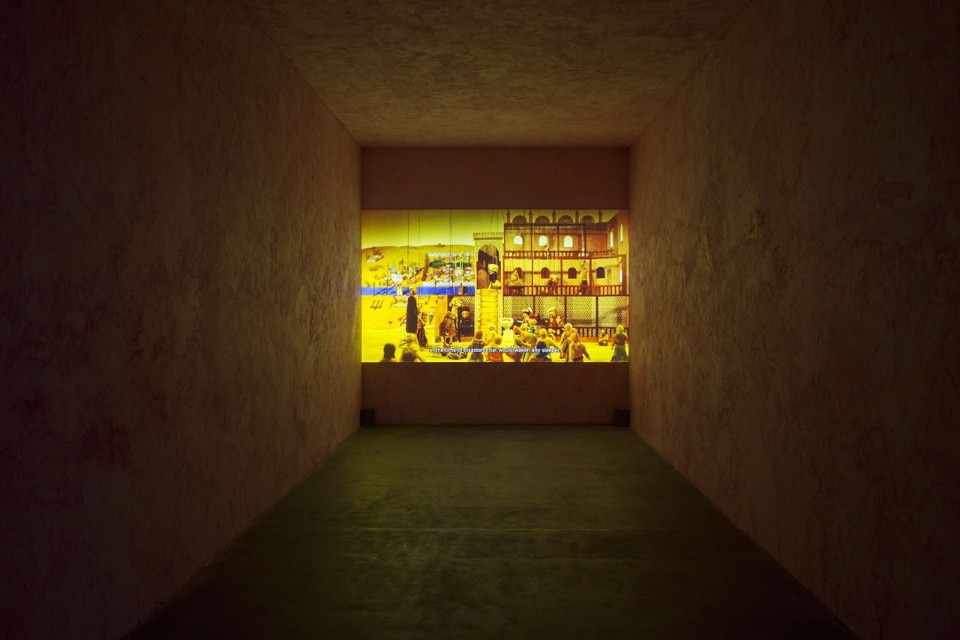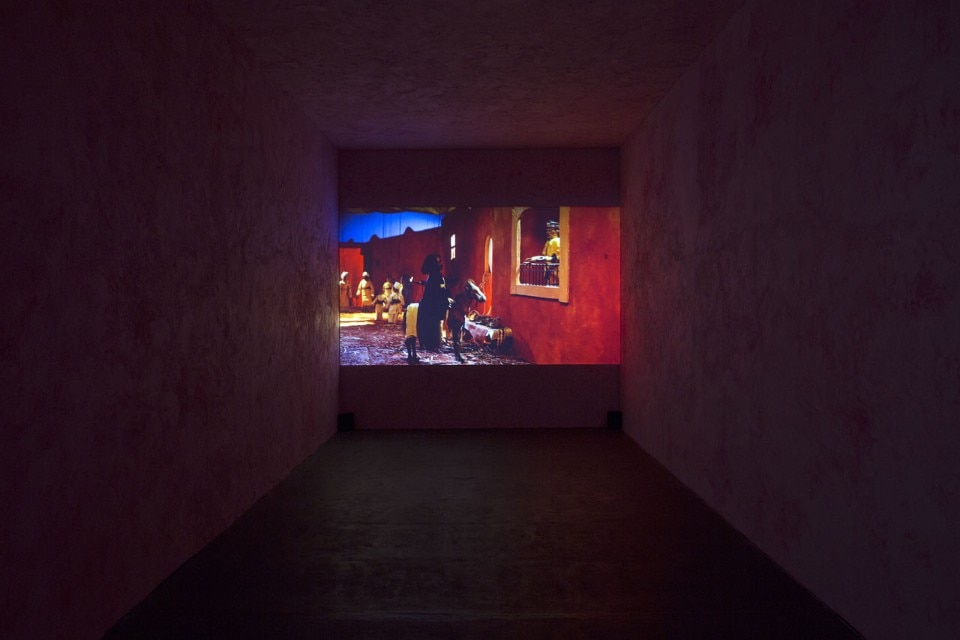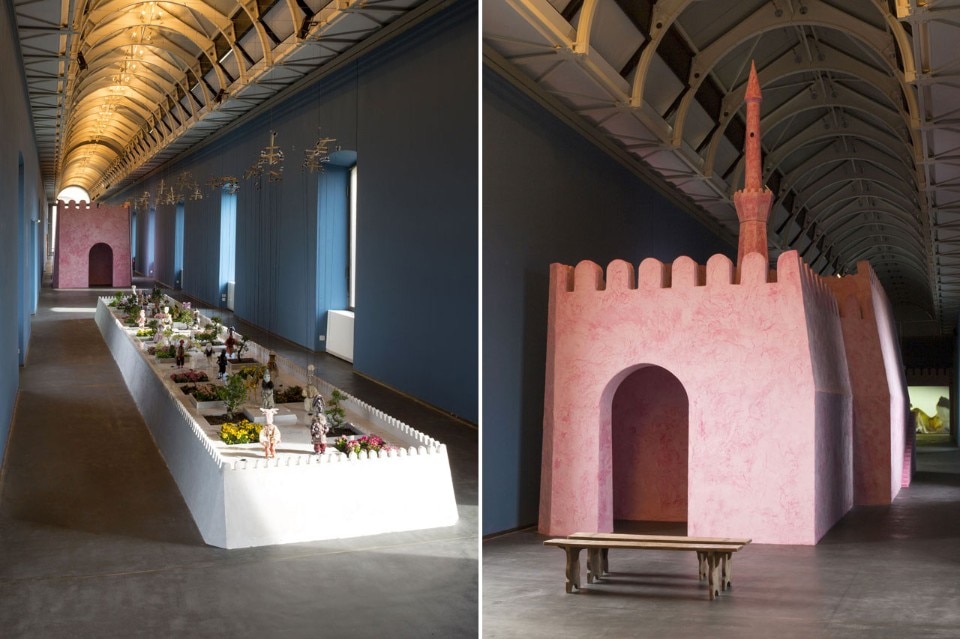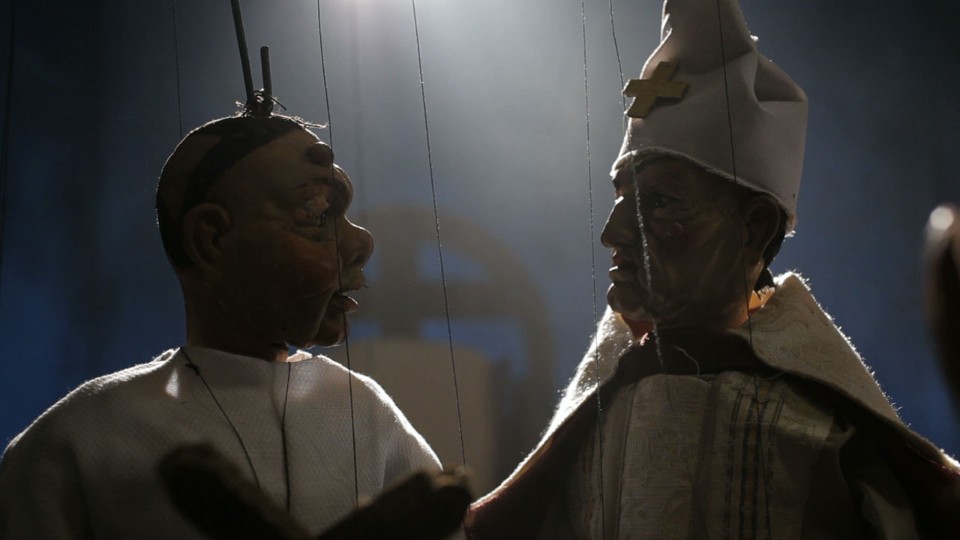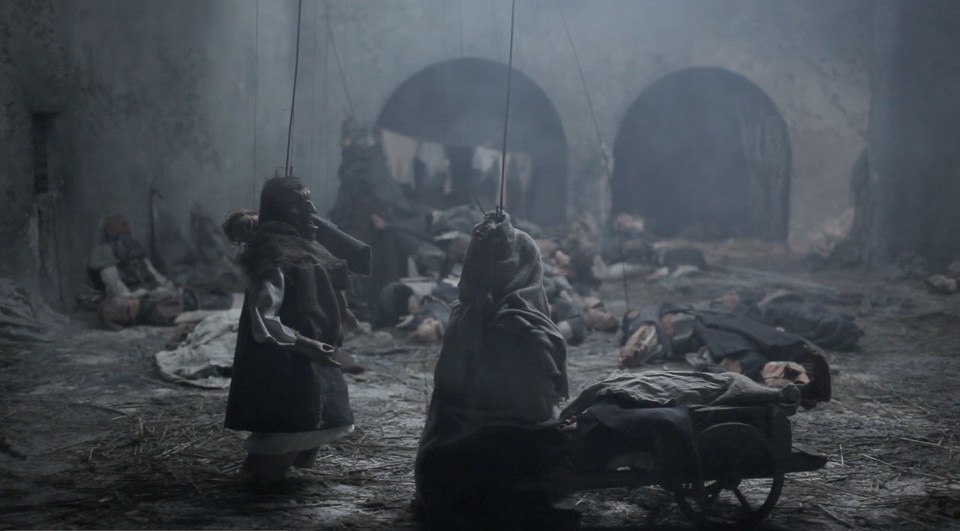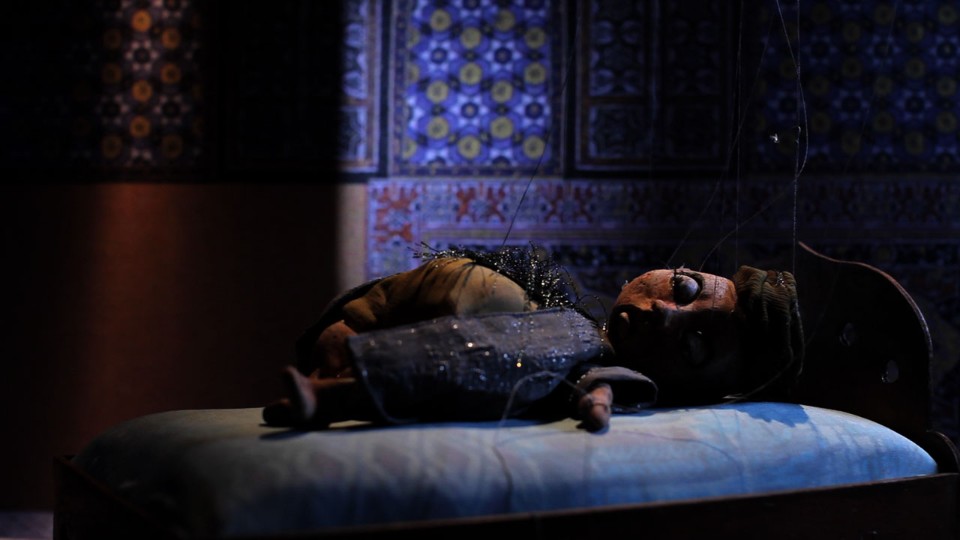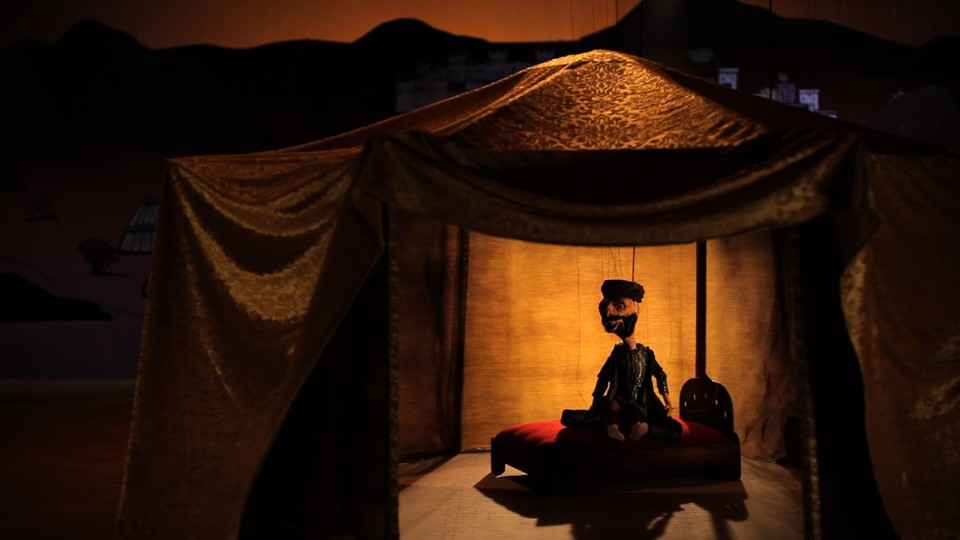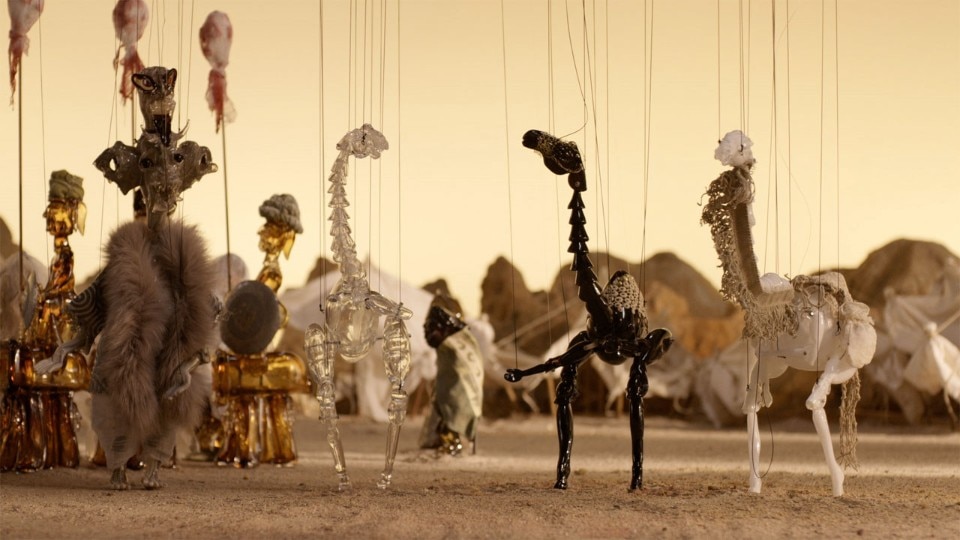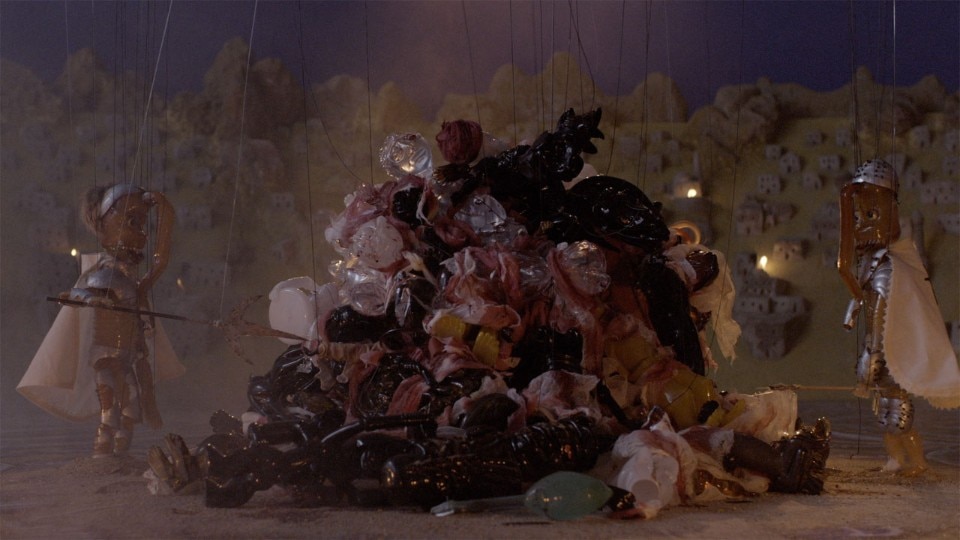In both cases, the projects have taken the form of a video trilogy on view as part of a large environmental installation, created specifically for the venues.
The Crusades through Arab Eyes, already exhibited at various prestigious locations around the world, including Documenta 13 curated by Carolyn Christov-Bakargiev, is a work by Shawky made between 2010 and 2015, in which he narrates the Church’s military campaigns in the Holy Land, as described by many medieval Islamic sources, and in particular by the Lebanese historian Amin Maalouf in his book The Crusades through Arab Eyes. The characters are not real actors but rather marionettes.
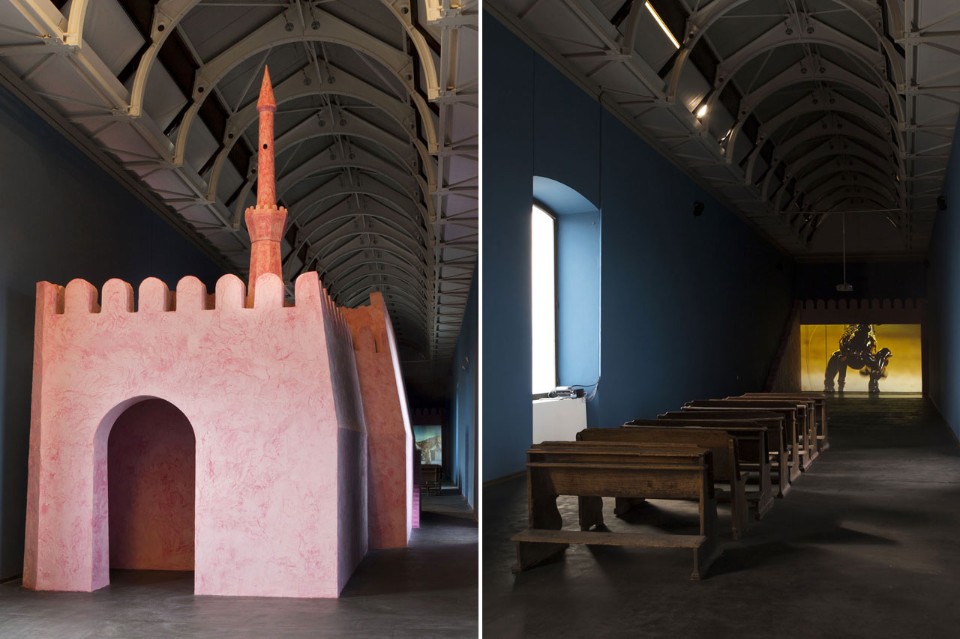
The first film, Cabaret Crusades: The Horror Show File, which describes the Crusades between 1096 and 1099 and which Shawky made while in residence at the Fondazione Pistoletto in Biella, uses antique marionettes from the Lupi Collection in Turin. For the second work, Cabaret Crusades: The Path to Cairo, on the Crusades between 1099 and 1145, the artist employs ceramic marionettes crafted in France, at Aubagne, a place that is famous for terracotta production related to Christian iconographic traditions, but not only. Aubagne is close to Clermont, the town where Pope Urban II held his sermon calling for the first armed expedition to the Holy Land and, therefore, the start of the Crusades.
The Secrets of Karbala, the final chapter in this video trilogy, uses glass marionettes made in Murano. The characters possess both human and animal forms. Here as well the choice is not accidental but rather due to the key role Venice played during the Crusades. This last work in the trilogy opens with the Battle of Karbala in 680, the main tragic event that led to the division between Shiites and Sunnis that exists even today. It ends with the Crusaders capturing Constantinople in 1204. The work highlights the ambition and rivalry, betrayal and violence that undermine humanity.
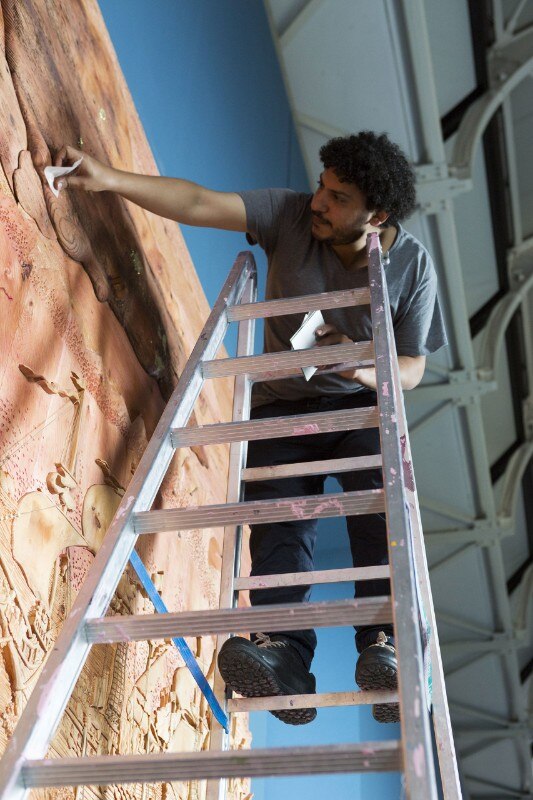
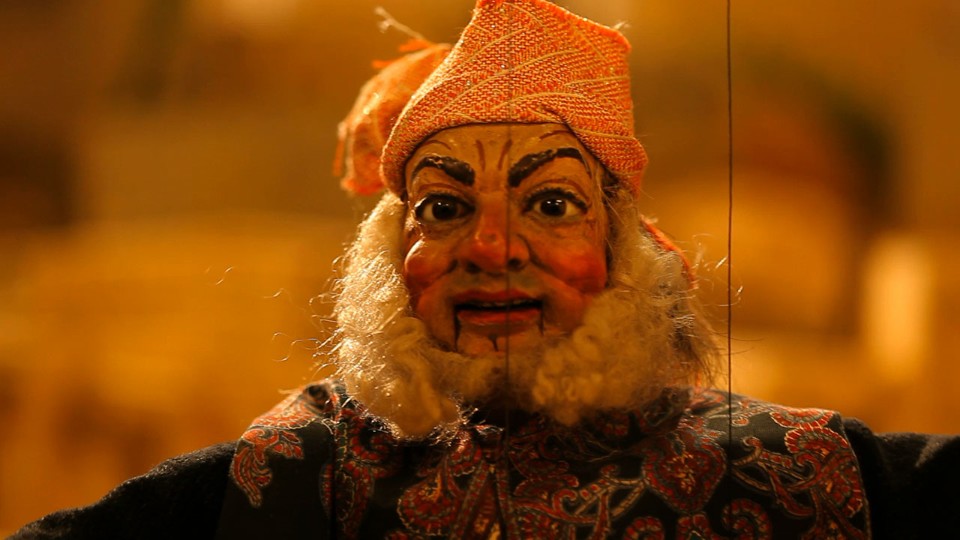
In conjunction with the exhibition at Rivoli, the Fondazione Merz hosts another project by Shawky, winner of the first edition of the Mario Merz Prize (other finalists were Lida Abdul, Glenn Ligon, Naeem Mohaiemen and Anri Sala). The exhibition Al Araba Al Madfuna, curated by Abdellah Karroum, consists of another video trilogy, presented within an immersive installation that occupies two floors of the Fondazione. Visitors find themselves in the desert, walking through the sand; there are few dirt houses around, the same that appear in the films. Instead, the black-and-white images portray boys and girls who – in traditional garb, with fake moustaches, gallabiye, turbans and covered heads, sitting or standing, in groups or in twos, at times accompanied by a docile cow – politely speak to each other. But the voices we hear from their mouths are those of adults, and the words are recited in ancient and melodic Arabic. Actually, the dialogues refer to the parables of the Egyptian writer Mohamed Mustagab. The narration is then joined to a particular belief of the village inhabitants, who dig tunnels under their homes in the hopes of finding buried treasures, according to tales handed down by their ancestors. Similarly, the situations outlined by Mohamed Mustagab connect mythological visions with the material physical world. The conceptual and oftentimes metaphysical nature of the scenes unfolds, in the third episode of the trilogy, as a story in colour, but with an inverted positive and negative.
until 5 February 2017
Wael Shawky
Castello di Rivoli Museo d’Arte Contemporanea, Turin
Curators: Carolyn Christov-Bakargiev e Marcella Beccaria
until 5 February 2017
Wael Shawky. Al Araba Al Madfuna
Fondazione Merz, Turin
Curator: Abdellah Karroum

